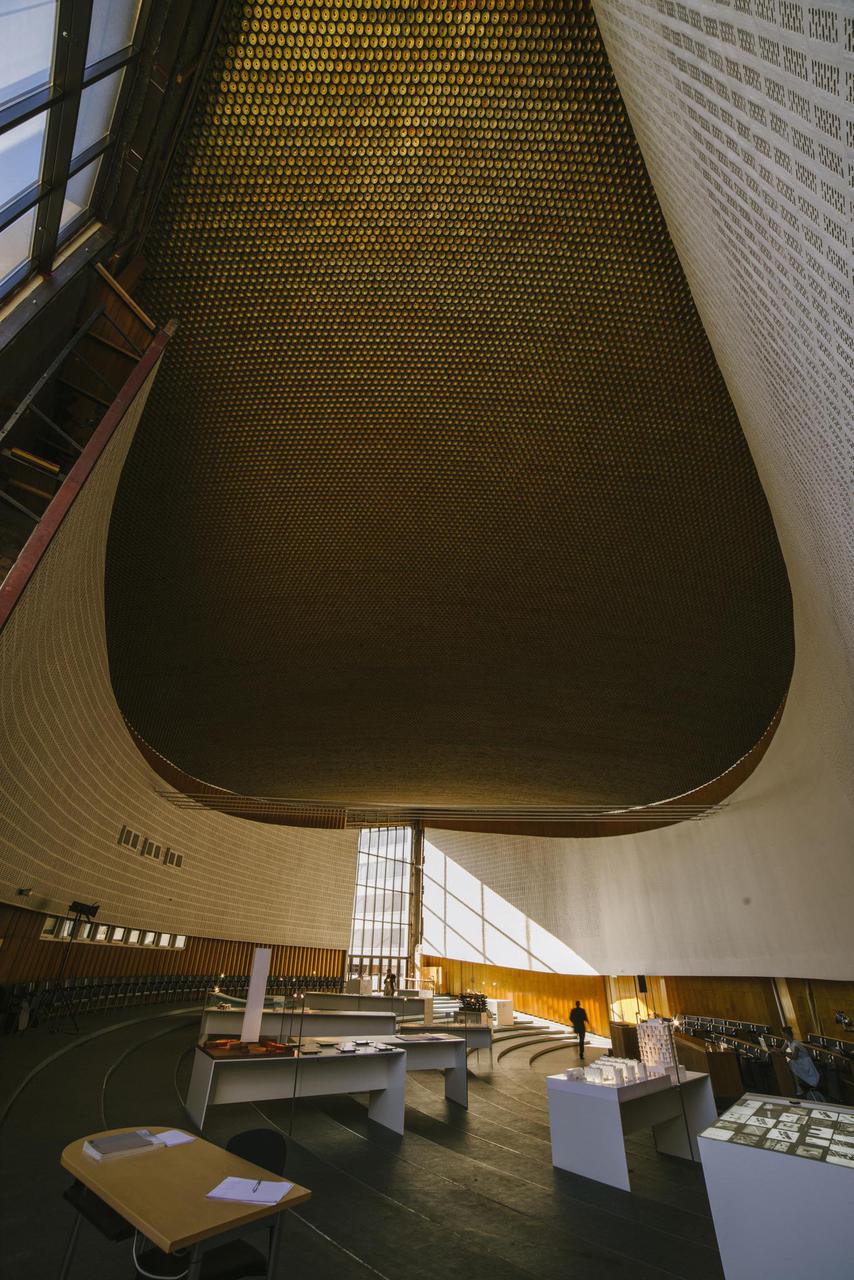Recycling utopias
Photo: Tõnu Tunnel / b210.ee
A hundred years ago, Marinetti manifested that each generation must create their own city. Nobody dares to suggest a tabula rasa to do that any more yet the desire and obligation to give a unique architectural shape to one's own generation remains. But the cities being rather full, it is more than realistic to assume that the focus of architectural production during the following decades will remain on reconstruction, rebuilding, reuse. Thus the question of recycling, posed vy this year's Tallinn Architecture Biennale, is more than relevant, as questions of value and usefulness of the already existing matter must be answered beforehand. These were the issues raised by the young curators of TAB 2013, Aet Ader, Kadri Klementi, Karin Tõugu, and Kaidi Õis - What is there to recycle from the spaces, structures, projects, ideas, concepts and materials of the past? What is there to recycle for new utopias of the future?
The generational line is drawn by a different attitude to the past – they are the generation of postmemory who have inherited the socialist heritage, the production of socialist space is not part of their personal self-conscious experience. Marianne Hirsch, who devised the concept of postmemory to deal with experiences of collective trauma, brings out the specific quality of the situation – it is only the 'generation after' who is actually capable of relating to the past meaningfully, to make up a whole of fragments, and to work themselves through it towards normal future. In the context of TAB and of reworking the socialist built heritage this also means that the starting positions of architects with backgrounds of either side of the former iron curtain are not that different – both are operating with inherited myths and fragmented traces, making use of them here and now. At the same time, the themes of this year's biennale relate to the contemporary culture's general obsession with the past, ranging from uncrtitical nostalgia to atemporal retro culture. In this highly charged context, the curators of the biennale abstain from making strong statements, inviting participants with diverse, even conflicting ideological positions instead. The postmemory generation seems to be already exhausted of the last two decades of 'memory wars' and feel an urge to move forward, take some action.
The format of the exhibition is surprisingly traditional – most of the projects do not reveal much of their working processes, contexts, dialogues, compromises, contingencies. The exhibition lays a great emphasis on Oeuvre itself, with just a few exceptions it is the end result of the process that is presented to the viewers to contemplate, be inspired, or make use of. Most of the projects do not problematize exhibition as a means of communication, and models and visuals are seen as mediums transparent enough to convey ideas of threedimensional space. The exhibition is neat, no fuss, no loose ends (or just a few) – it is addressing the viewer from the position of the knowing professional.
All twelve works are in themselves answers to very particular questions – each participant was presented with an original object to address or rework, the objects being not necessarily the most problematic but rather the most symbolic of the Soviet heritage. The projects are a vivid reflection of the participants' differences. Whereas Pier Vittorio Aureli recycles rather the idealistic ethos of early Modernsim than the actual space, reworking the Existenzminimum to make use for the contemporary precariat and criticizing the market-driven creative industries ideology, Sotamaa answers with a hedonistic space that accepts neoliberalist realities. The latter is supported by Benjamin Dillenburger, who substitutes the massproduced spatial units of a prefab with a heteronomy of unique hybrid rooms to liberate the spatial experience for the user – all that is solid melts into air no more but turns into sand instead. The concept of utopia persists, but it is definitely a question of what are the dreams about. Exyzt starts off with a call for life as an adventure quite in the spirit of Constant but their liberation leads not to spiritual and intellectual expansion any more but to good food and conversation in a sauna landed as a meteorite to Mustamäe. Many projects aim at continuing or completing the original utopian impulse or idea – VROA has made the Olympic centre's infrastructural architecture more potent than it could ever be; in a similar way, Salto tries to reinstate the original spatial delicacy of the Flower pavilion. Raumlabor brings forth the significance of a detail, highlighting the taboo space in front of the Communist Party headquarters, currently Ministry of Foreign Affairs, where the former location of Lenin monument is still a detached, thus restricted, traffic island on the street. Vladimir Frolov and Alexey Levchuk draw on classic Russian avant-garde with a gesture so grandiose that it is almost incapable of local dialogue.
But one of the main protagonists of the exhibition is the location itself – the legendary hall of the Communist Party headquarters that has preserved unused as a time capsule, and brought to public use for the first time now with TAB. This achievement renders the exhibition maximum conceptual integrity, being simultaneously a conceptual statement and a very tangible intervention, hopefully with results to last much longer than the event itself. And this is an important gesture and a question to pose to next organizers. In the international architecture world with ever-growing abundance of events, TAB has to find its own identity to draw international audience – but it sure has to have a wider and sustainable impact on the local context as well.

Add a comment